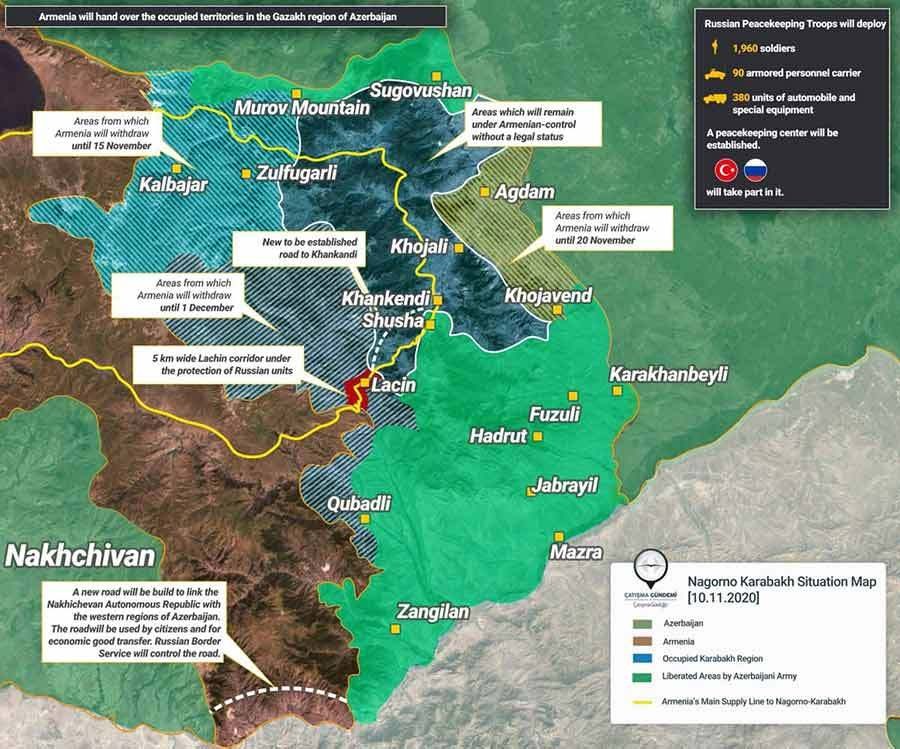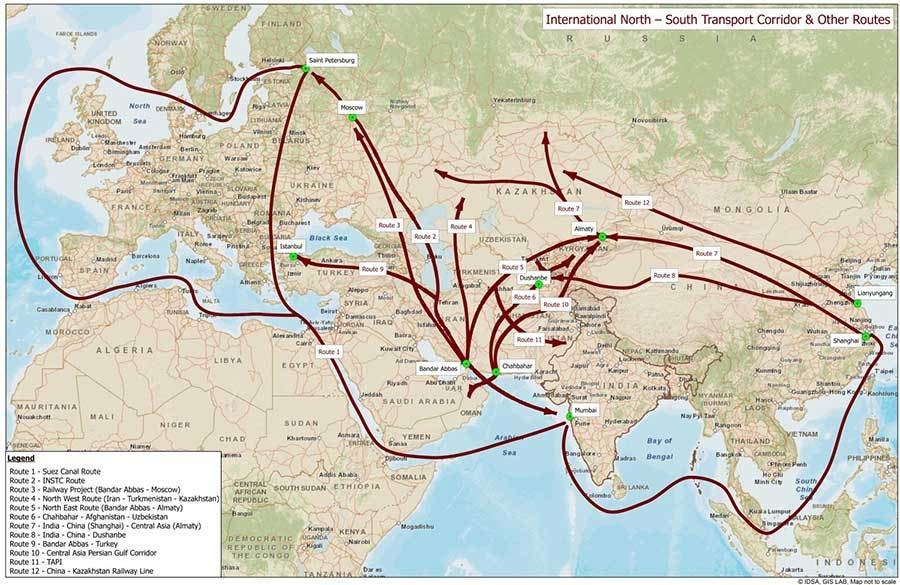Armenia and South Caucasus Can Now Develop as Transport Corridors & NSEW Trading Hubs

- The resolution of the Nagorno-Karabakh conflict opens up the South Caucasus
- Improves trade and interconnectivity links between Azerbaijan, Turkey, Russia, Iran, Central Asia and India
- Armenian businesses need to reposition their political and market access
Op/Ed by Chris Devonshire-Ellis
The recent trilateral meeting of the Presidents of Azerbaijan, Russia and the Prime Minister of Armenia looked at face value to be attentive of holding ceasefire in the disputed Nagorno-Karabakh region, with Western media concentrating on the fact that ‘neither the Armenian or Azerbaijani sides shook hands’. Which goes some way to illustrating the nature of media coverage: Covid-19 has truncated such greetings. In fact, we understand that real breakthroughs were made that have the potential for long lasting changes in the South Caucasus region. as all parties agreed on the details of unblocking all economic and transport links in the region.
This is a significant step forward in a region that has in the past seen Armenian control of the Nagorno-Karabakh area result in neglect and a lack of investment. Now, the imposition of a Russian-controlled regional corridor means Azerbaijan is directly connected to Turkey for the first time. Previously, the Armenian southern strip of Nagorno-Karabakh, known as the Syunik region, prevented connections. With Armenia giving up parts of Nagorno-Karabakh, and a corridor being created, Azerbaijan and Turkey are now connected.

This suits Russia, Iran, Turkey as well as India, as they are all investors in, or will take strategic advantage from the North-South International Transport Corridor (INSTC) which connects Russia with India via Iran and heads north through Azerbaijan to meet with the Trans-Siberian Railway.
Turkey too, now has potential to expand its rail network to link up with the INSTC and markets again in Russia and India. It means that Armenia, which lost a conflict it started, now needs to consider the political views of Azerbaijan, Turkey, Iran, and Russia, whereas in the past it was heavily dependent upon Washington, NATO, and the European Union.
However, now that regional peace has been brokered, the entire regional interconnectivity can be reassessed. This may not be a bad thing for Armenia either, meaning it is now possible to begin the development of the South Caucasus, which is a transit area and connects several Eurasian markets.
These include Turkey, Russia, Iran in addition to Pakistan, India, and the Central Asian states.

Their involvement in the transport infrastructure of the South Caucasus will lead to economic growth in these countries. This will be developed with both Russian and Chinese investments, with increasing interaction between Baku and Moscow.
One issue remains as concerns Ankara, as for Turkey, this model has not been expected, and it is caught up in territorial disputes to its north-west, as well as a difficult relationship with Russia.
This means we could see better Russian economic relations with Turkey and should the Turkish and Iranian leaders aim to expand economic cooperation under this regional development, economic, trade and political ties will improve.
In the longer term, now the Nagorno-Karabakh conflict has been resolved, regional trade turnover should grow. Armenian businesses should be looking both East-West between Europe and the Caspian to Central Asia, and North-South between Russia, Iran, India, and South Asia, and how to develop and access those markets.
Related Reading
- Azerbaijan Moves To Develop As Caucasian-Eurasian Transport Hub
- India and Russia To Connect Supply Chains Via Iran’s INSTC
- Anzali Free Trade Zone: Emerging Iran’s Gateway On The Caspian Sea
About Us
Silk Road Briefing is written by Dezan Shira & Associates. The firm has 28 offices throughout Asia, and assists foreign investors into the region. For strategic advisory and business intelligence issues please contact the firm at silkroad@dezshira.com or visit www.dezshira.com





